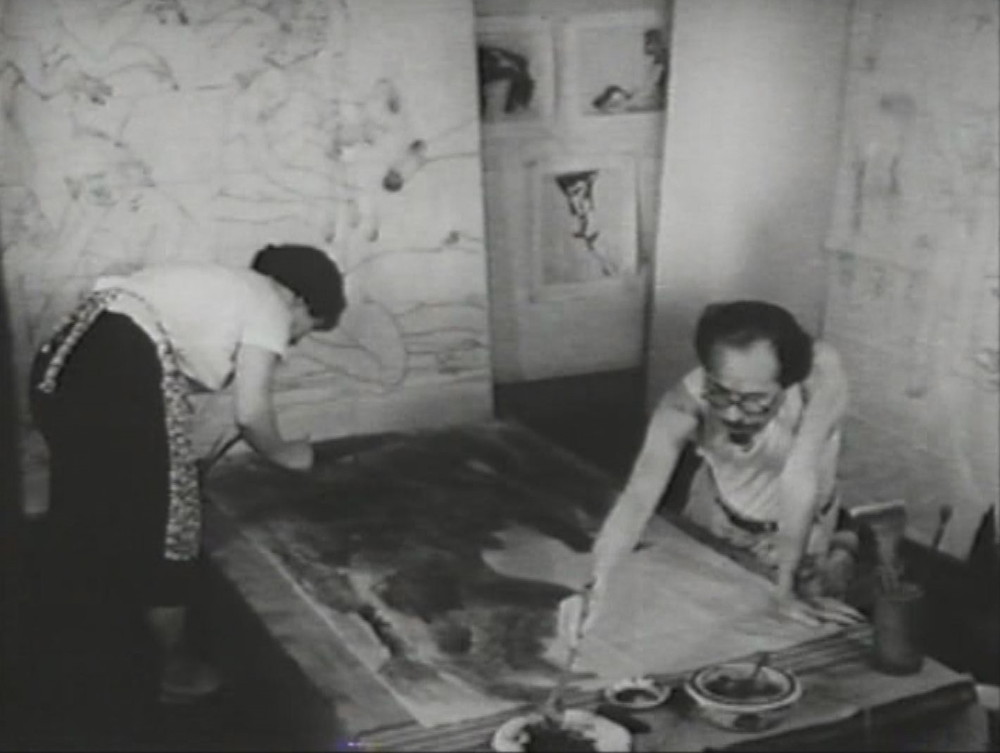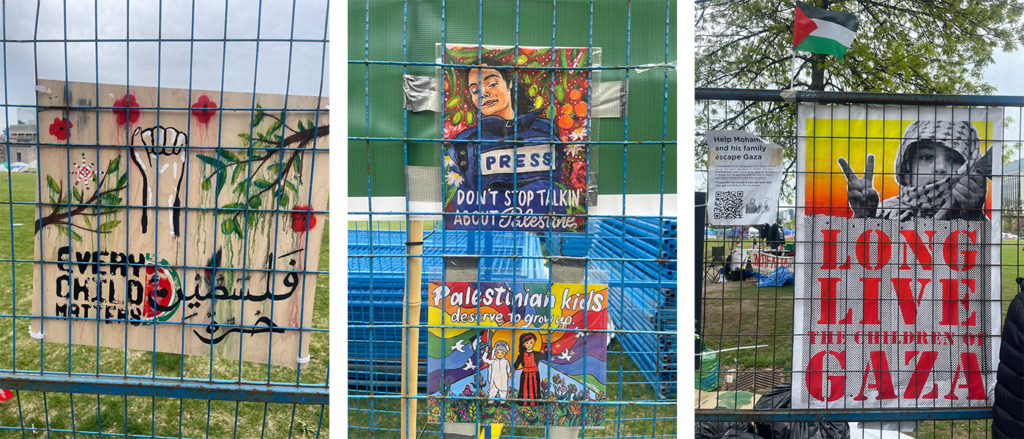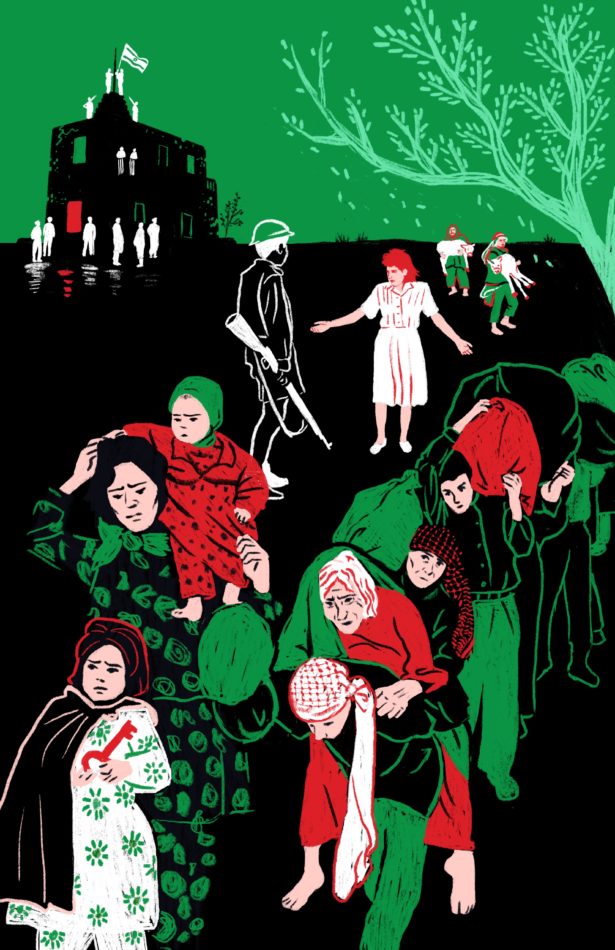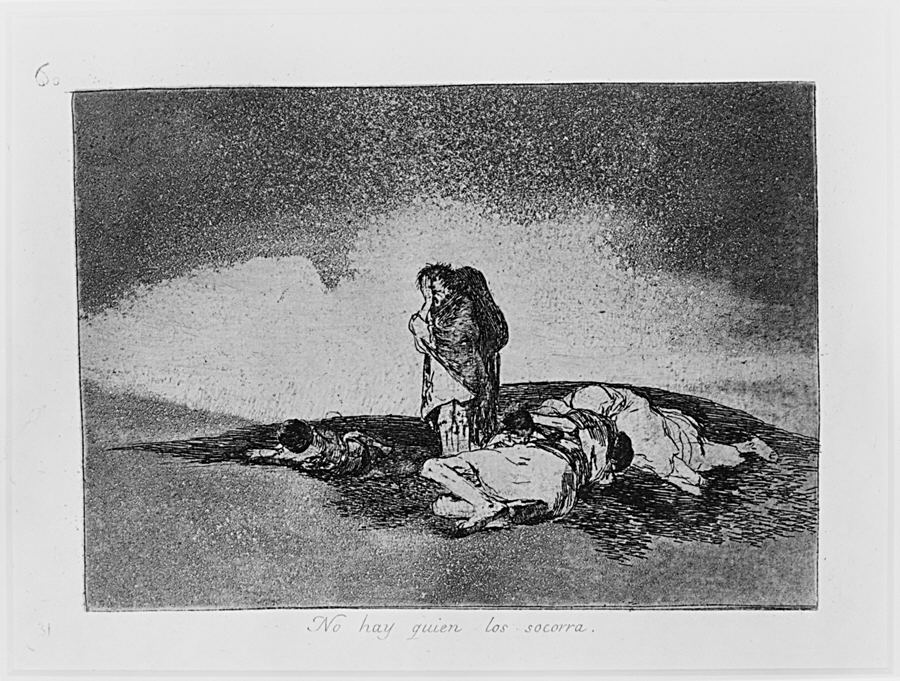Iri and Toshi Maruki had already been evacuated from Tokyo and were living in Urawa, Saitama when the atomic bomb was released over Hiroshima, Japan. In the days that followed in August 1945, the Japanese artist couple rushed to the city to witness the horrors firsthand, supporting the relief work where they could. As oil and traditional ink wash painters, the Marukis felt it was their responsibility to depict and document the memories of the survivors and those killed, around 200,000 people. Iri and Toshi had a mission to fight against the subsequent forgetting and the erasure of events, including those that they had not personally lived, to create a collective memory.

‘All memory is individual, unreproducible – it dies with each person,’ writes Susan Sontag in her book, Regarding the Pain of Others (2003), which reflects on the history and the power of the visual representations of atrocities. ‘What is called collective memory is not a remembering but a stipulating: that this is important, and this is the story about how it happened, with the pictures that lock the story in our minds.’ In the years that followed, the Marukis began to paint on 1.8 by 7.2 meter folded screens the testimonies, memories, imagination, and emotions of the hibakushas (‘survivors of the atomic bombs’) in Hiroshima and Nagasaki. The first three panels, Ghost, Fire, and Water, toured Japan in an exhibition, at a time when any reportage or photographs of the bombings were strictly prohibited under the US-led Allied occupation. The Marukis resisted this silencing by creating a collective memory of the events through their paintings.
Not just for one day, nor for one year; for thirty years, they kept on painting these images. The completed set of fifteen paintings, called The Hiroshima Panels, have since traveled across twenty countries, making their imprint on the minds of people from across the world. Fourteen of them are permanently exhibited at the Maruki Gallery in Saitama and included in Tricontinental: Institute for Social Research’s latest dossier, The New Cold War Is Sending Tremors through Northeast Asia, co-published with the International Strategy Center (South Korea) and No Cold War.
‘I believe that what is depicted in The Hiroshima Panels is not the history of the past, but rather issues that continue to this day,’ Yukinori Okamura, the curator of the Maruki Gallery, told me in our conversation about the continued relevance of the artworks. He continued,
‘On the other hand, nearly eighty years have passed since the atomic bombings, and fewer and fewer people are able to tell their personal stories of the atomic bombings [because of their age]. Paintings remain longer than human lives, so evoking memories [of the atomic bombings] through paintings plays an important role when we think of the future.’ Though painted nearly eight decades ago, The Hiroshima Panels, which relies on public support to maintain, are a warning for our present and for our shared future.

Drawn in the sumi-e style of traditional Japanese ink painting, these panels include around 900 life-sized human figures. Rendered in heavy red and black washes, they are gruesome depictions of the dead and the dying. They arrest you. They disturb you. They torment you. But is it enough just to ‘regard the pain of others’ through these images? What is it that images should make us feel? More importantly, what should images drive us to do?
These are some of the questions that Sontag reflects on when updating her earlier thoughts developed over three decades before in On Photography (1977). ‘As much as they create sympathy, I wrote, photographs shrivel sympathy. Is this true? I thought it was when I wrote it. I’m not so sure now. What is the evidence that photographs have a diminishing impact, that our culture of spectatorship neutralizes the moral force of photographs of atrocities?’ Can an image – still or moving – that documents atrocities today carry a moral force? As images multiply in the digital age, in their pervasiveness, and in the places that we encounter them, has their moral force been neutralized? Has our sympathy, as viewers, been shriveled?

In the last seven months, people have been refusing this narrative of apathy and cynicism. Confronted with the myriad images of Israel’s genocidal attacks in Gaza, millions have taken to the streets and students across hundreds of universities have been occupying their campuses. In solidarity with the students, I visited a camp at my alma mater, the University of Toronto. Hand-painted artworks and printed posters lined the large fence surrounding King’s College Circle, renamed the People’s Circle for Palestine where over 150 students were encamped. Indeed, today the images have multiplied, as have the settings where we encounter them.
A genocide has been livestreamed on our cellphones and laptop screens, accompanying our most mundane daily activities; the gallery has shifted to the encampments, the streets, and our social media feeds. 15 May marked the seventy-sixth anniversary of the Nakba, ‘the catastrophe’, which forcibly displaced three-quarters of a million Palestinians to create the Israeli state. Our designer, Ingrid Neves, created this poster as part of a collection organised by Utopix.

Over two centuries ago, Spanish painter Francisco Goya created one of the most memorable sets of anti-war images. The Disasters of War (1810–1820) was a visual protest of brutal repression during the 1808 Dos de Mayo Uprising in the form of 82 intaglio prints. Below each print is a short caption – a call to the viewer to feel. No hay quien los socorra (‘There is no one to help them’). Esto es peor (‘This is worse’). Ya no hay tiempo (‘There isn’t time now’). Each line calls for a response from the viewer, as if to say, ‘No, it is not enough to regard the pain of others.’

Genocide is not a spectacle. Images of atrocities have the capacity – and a responsibility – to mobilize our emotions and mobilize us to act. They are a call for us to bear witness, and to regard the pain of others as our own. If the Marukis were alive, I believe they would be painting images just to remind us of this. After all, in their later years, their paintings took on expanded themes, featuring the plight of fishing communities, environmental crises, and the sexual violence committed by the Japanese army during the 1937 Nanjing Massacre in China. ‘The Marukis sought to address the violence and oppression inherent in human beings, starting with the memory of the atomic bombings,’ said the curator Okamura. ‘However, neither Iri nor Toshi are alive anymore. I believe it is our responsibility as individuals living today to face and remember what is happening in the world now, just as the Marukis sincerely faced the issues of their time.’




